On July 1, 1999, Richard Behr was among the 1,000 people watching the first pieces of earth pulled away from the Edwards Dam in Augusta — and the first drop of 17 miles of water that would return to being a free-flowing river after 162 years.
The following day, against southerly headwinds that impeded paddling, he floated down the Kennebec River from Waterville to Augusta.
The slow drain of the impounded water to the sea would reveal muddy shorelines and messes of debris — but it also revealed streamheads, islands and rapids.
“It did look awful,” Behr recalled, “but it so quickly stabilized.”
Like a fresh wound that needs to be rinsed and rehabilitated, the river was taking its first steps to heal itself.
Monday marks the 20th anniversary of the landmark removal of the Edwards Dam. The removal propelled a movement around the U.S. to free rivers and bring them back to life, said Brian Graber of American Rivers, a river conservation organization.
“It’s an early example that there is no faster or more effective way to bring a river back to life than to remove a dam,” said Graber, American Rivers’ senior director of River Restoration Program.
After the dam’s removal, vegetation began to restore and stabilize the banks, and the fish swam upstream — just a few at first, then by the thousands and millions.
Now, two decades later, Behr leads Three Rivers Guide Service and owns 300 feet of shoreline on the Kennebec in Vassalboro. From his drift boat, he sees an abundance of diadromous fish — Atlantic shortnose sturgeons, sea lampreys, stripers, alewives, shad, blueback and river herrings, and American eels — that can be found in both freshwater and saltwater.
Diadromous fish are classified by where they live and spawn: Anadromous fish, such as alewives, live in the sea but return to lakes to spawn; catadromous fishes, such as eels, live in freshwater but spawn in the sea.

A backhoe and small crew (bottom) watch as the rushing waters of the Kennebec River breach the coffer dam section of Edwards Dam in Augusta on July 1, 1999, flowing freely for the first time in nearly a century and a half. Kennebec Journal file photo
“As a person that spends a lot of time on the river, I see things a normal person wouldn’t see,” Behr said, “things you wouldn’t see if a dam was there.”
As fish returned, the wildlife that feeds on the aquatic life also has returned, such as ospreys, bald eagles, minks, martins and raccoons.
Behr recalls even seeing a loon — which normally sticks to lakes — making use of the abundant fish supply.
“These species co-evolved as glaciers retreated and land rebounded,” Steve Brooke said.
Both Brooke and Behr represented the Kennebec Valley Chapter of Trout Unlimited 20 years ago, advocating for removal of the Edwards Dam, and continue to advocate for river health.
EFFECTS OF REMOVAL
Since the Edwards Dam was removed, 1,199 other dams that were no longer serving a purpose have been removed around the country, he said. Many were built for mills that were out of operation and had become safety and economic burdens.

Around the country, Graber estimates there are about 100,000 dams. More than 50% of those, he said, are no longer serving purposes — such as flood management and power supply — and have the potential to be removed.
The Kennebec River has also inspired dam removal internationally.
In June, work began to remove two dams on the Sélune River in Normandy, the Vezins and La Roche Qui Boit.
“Communities are inspired by what has happened in Maine,” said Amy Kober, national communications director at American Rivers, “and they are thinking big about the potential of restoration on their own rivers.”
When these dams are removed, Graber said, within the first year, the smallest species — such as insects — return to the river, providing the base food source for fish, which usually return in two to three years.
In the Kennebec River, restoring a strong fish population took about 10 years, Graber said.
The 2008 removal of the Fort Halifax Dam in Winslow, which sparked controversy among some local property owners, contributed to that success, as fish were able to travel up the Sebasticook River to spawn upstream.
Graber said he spent his childhood summers on Three Mile Pond. There were no alewives.
“Now you can see alewives exploding around the lake in the morning,” he said.
A LITTLE HISTORY
The 917-foot-long Edwards Dam, however, was an unusual case because it was forcibly removed.

The Kennebec River impoundment area behind Edwards Dam in Augusta is seen on June 18, 1999. A former paper mill is on the riverbank at left, and the dam can be seen as line in the river turned white as water goes over it. Kennebec Journal file photo by Joe Phelan
In 1994, according to the Natural Resources Council of Maine, the Federal Energy Regulatory Commission issued a new policy that allowed it to weigh the need for hydropower benefit against environmental protection, allowing it to deny licensing and authorize dismantling.
The dam owners resisted, and they sought a new 30-year license from the federal commission.
The dam originally provided power to a large textile mill owned by the Edwards Manufacturing Co. The mill was built in the late 1800s on the west bank in Augusta, employing 700 or more people. The mill closed its doors, laying off its employees, in the early 1980s and sold the electricity the dam produced to Central Maine Power.
In 1997, the commission ruled that the environmental benefits of removal outweighed the value of the power generated by the dam, but it still wasn’t clear at the time where the money to dismantle the dam would come from. Bath Iron Works, CMP and some other industries ultimately contributed more than $7 million to help fund the dam removal and support fish restoration in the river.
Within a few years, the Department of Marine Resources initiated efforts to restore alewife habitat — something the Kennebec Hydro Developers Group, which managed dams upstream, was receptive to, but the Edwards Manufacturing Co. was not.
“It was a long haul,” recalled Brooke, who advocated for river health with the Kennebec Coalition, which was composed of Trout Unlimited Kennebec Valley Chapter, American Rivers, the Natural Resources Council of Maine and the Atlantic Salmon Federation.
“The mindset (used to be) that the river was a place to get rid of unwanted stuff,” said Behr, giving examples such as untreated wastewater and refuse from the paper mill, tanneries, small farms and personal dumps.
“That changed during the Clean Water Act.”
Behr, who is 60 now, grew up near an impoundment on the Union River in Ellsworth. He said parents discouraged their children from playing in the river because there was putrid sewage being discharged near their homes from industrial outflows.
“Despite their intentions,” Behr said, “many of us spent time in the river.”

A high school biology student weighs an alewife June 5 along the banks of Cobbosseecontee Stream in Gardiner. Biology students from Gardiner Area High School were catching and measuring fish as a research project this spring. Kennebec Journal photo by Joe Phelan
Last year, Brooke said, more than 5 million alewives passed through the fish lift at the Benton Falls dam on the Sebasticook River, which is the largest in the country, according to the resources council.
That’s enough fish, Behr said, to turn the water brown as they crowd into that fish lift.
But despite this success, it will never be exactly as it was, Brooke said.
“You can never recreate the past,” he said. “You can only create a new baseline stability.”
MORE TO BE DONE

Greg Ponte, left, takes a net full of alewives caught by Hunter Lamarre to dump them into a bucket June 5 along the banks of Cobbosseecontee Stream in Gardiner. Biology students from Gardiner Area High School spent time catching and measuring fish for a spring research project. Kennebec Journal photo by Joe Phelan
The restoration of the region isn’t finished.
In the Cobbossee Watershed, for example, alewives are still unable to spawn in some of their native spawning lakes, such as Maranacook, Annabessacook and Cobbossee lakes in the Winthrop area — around 5,000 acres of habitat, Brooke said.
Three dams on Cobbosseecontee Stream prevent migration into the Cobbossee Watershed, and the Gardiner-based conservation group Upstream is trying to work with dam owners to create fish passages.
Next summer it’ll fund an engineering consultant, Brooke said, to study what has to happen to open a river and determine costs of making fish passages. To aid in those studies, students from Gardiner High School helped gather scientific data “to help build that tributary,” Brooke said.
What has been the dam removal’s economic impact on the region?
“It has also resulted in a rejuvenation of recreational angling opportunities,” Patrick Keliher, commissioner of Maine Department of Marine Resources, said in a statement, “and it’s significant opportunity for communities and individuals who benefit from a robust alewife harvest.”

A high school biology student scrapes a scale sample off an alewife June 5 along the banks of Cobbosseecontee Stream in Gardiner. Biology students from Gardiner Area High School were catching and measuring fish as a research project this spring. Kennebec Journal photo by Joe Phelan
Brooke said the impact is not quantifiable.
“Look at the waterfront restaurants in Hallowell,” he said. “You’ll see people on a sunny day sitting watching the sturgeon.”
“It’s not quantifiable,” Brooke said, naming some ways the healthier ecosystem has brought in revenue.
The Natural Resources Council of Maine plans to host a celebration of the 20th anniversary of the dam’s removal at 10 a.m. Monday at Mill Park in Augusta.
“This anniversary is a chance to celebrate the far-reaching importance of a healthy river ecosystem to our state,” Keliher said. “It also should serve as a reminder that we as a state must remain dedicated to river restoration efforts in the future.”
Send questions/comments to the editors.


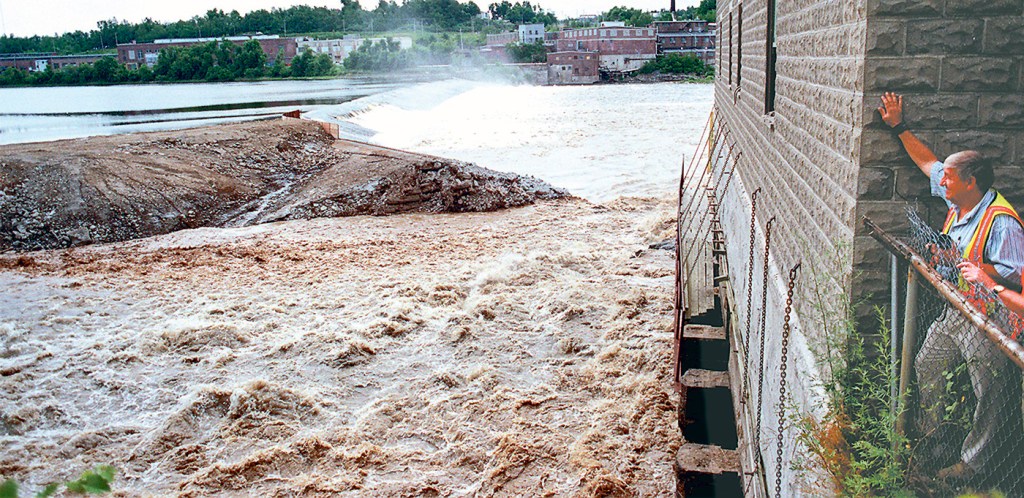
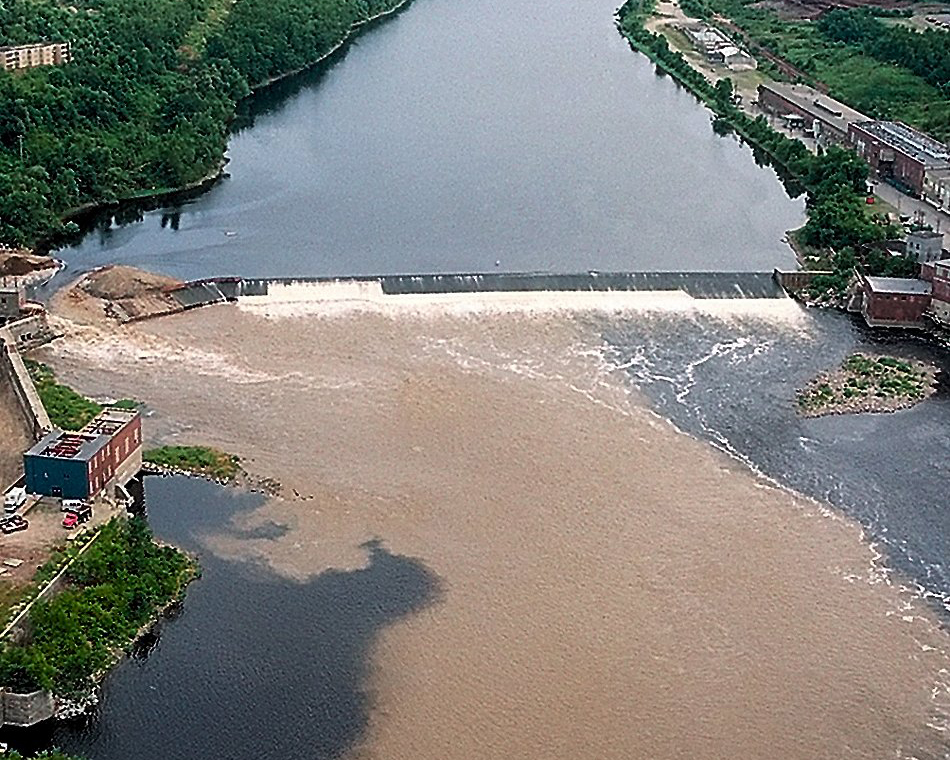
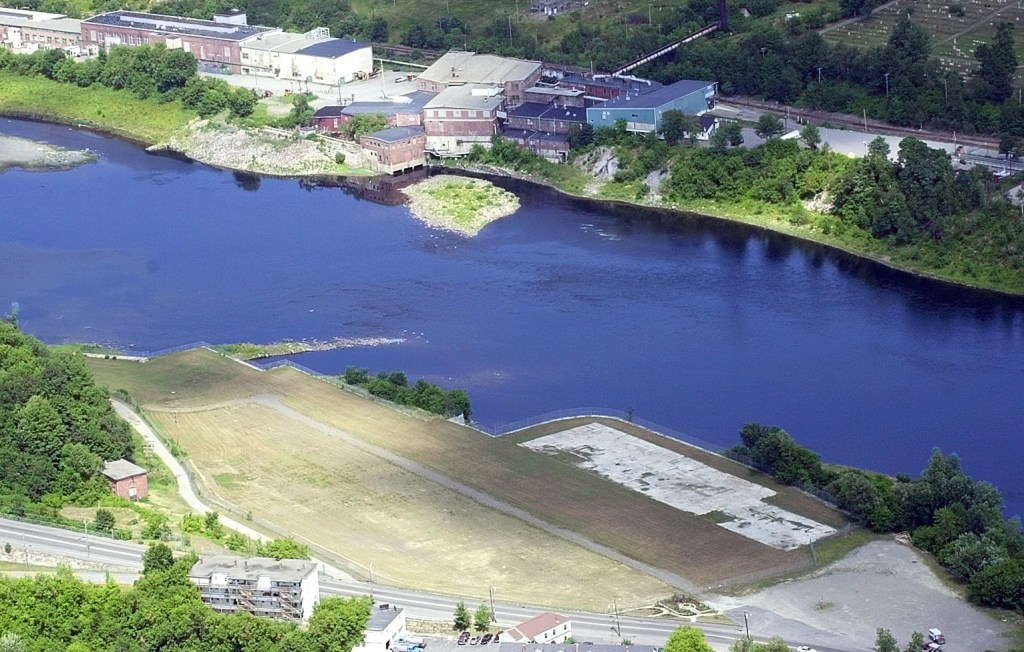
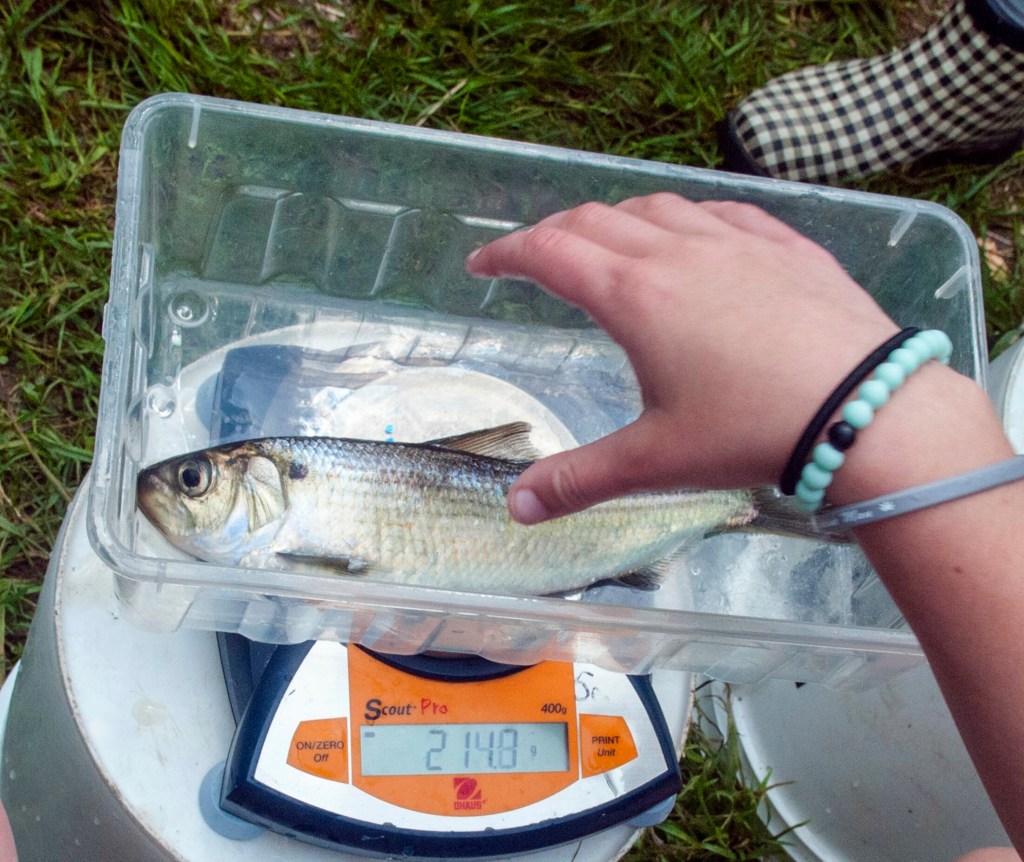
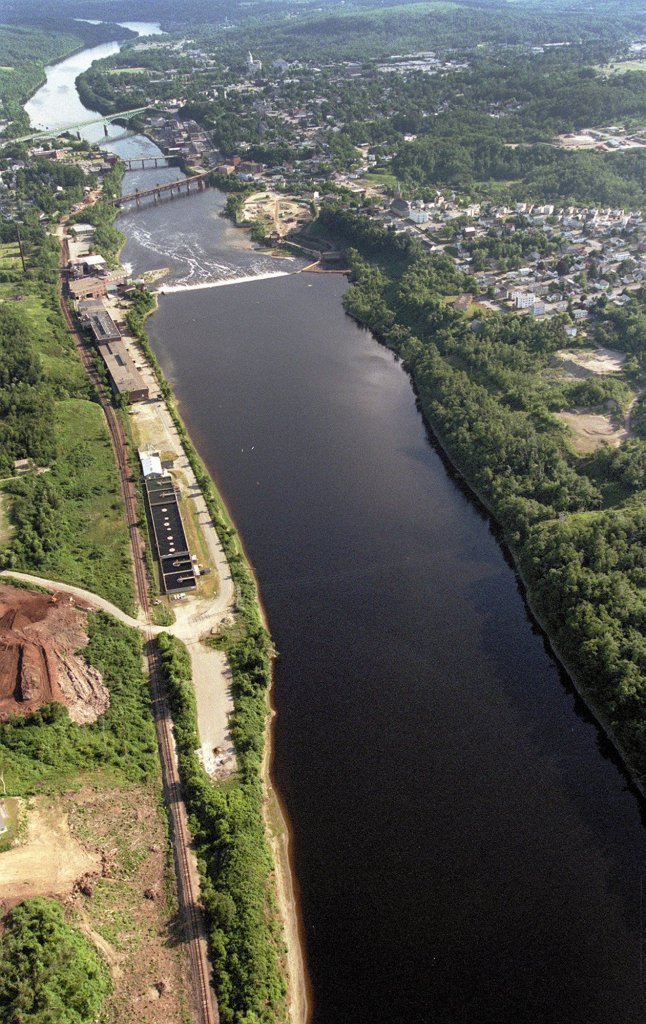
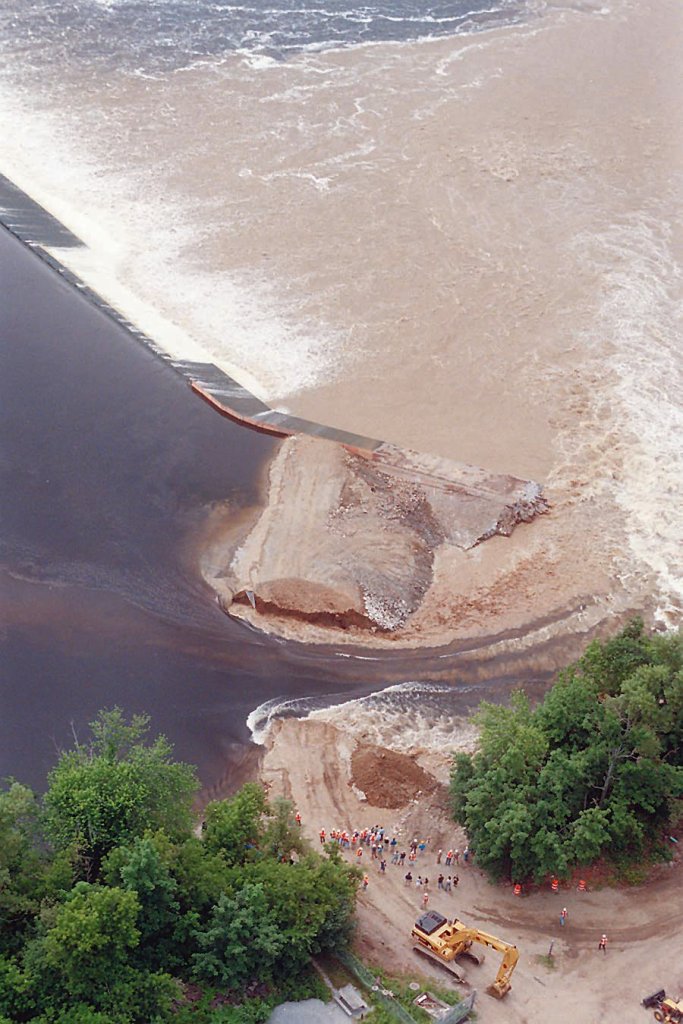

Comments are no longer available on this story